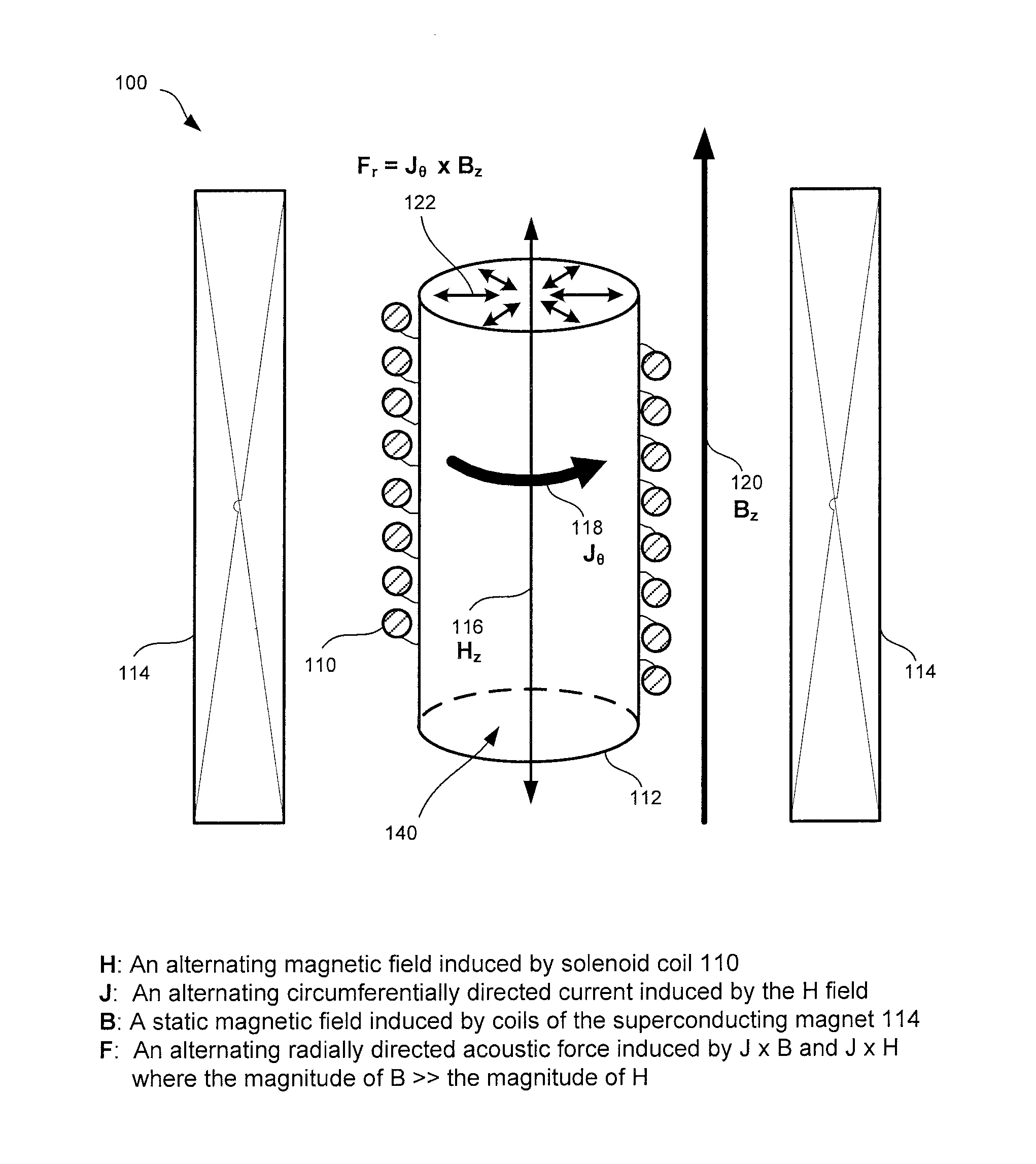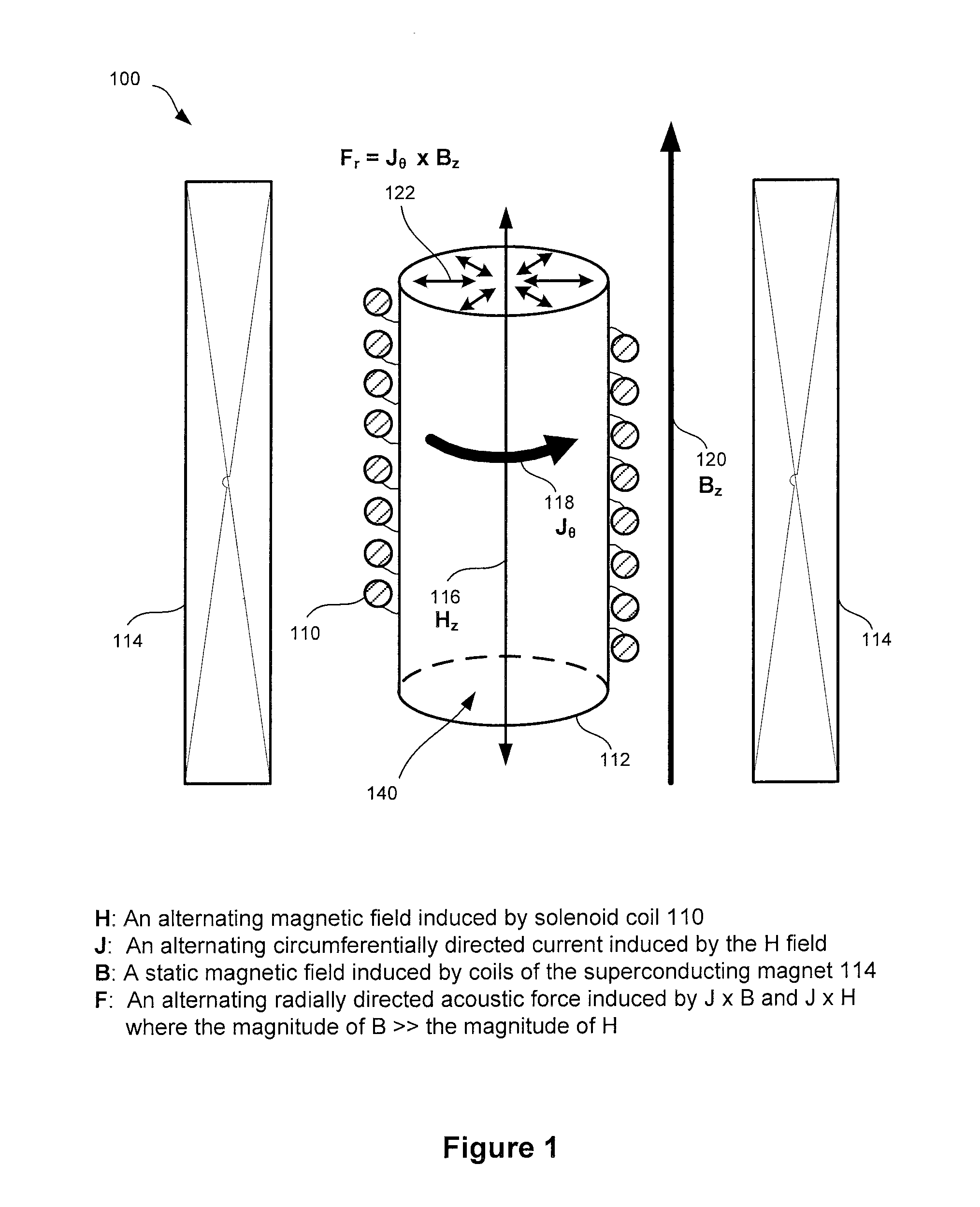Emat enhanced dispersion of particles in liquid
a technology of emat and liquid, applied in the direction of mixing, chemistry apparatus and processes, mixers, etc., can solve the problems of limited temperature range of acoustic transducers, unsatisfactory chemical interactions, and limit the energy transfer
- Summary
- Abstract
- Description
- Claims
- Application Information
AI Technical Summary
Benefits of technology
Problems solved by technology
Method used
Image
Examples
Embodiment Construction
[0017]In some systems, mechanical stirring may be utilized to mix a powder into a liquid medium. However, dispersion of particulate matter in a liquid may be performed or enhanced by the application of sonic or ultrasonic energy. One method of applying acoustic energy that may be effective in mixing conductive and non-conductive materials includes electromagnetic acoustic transduction (EMAT). The mixing effect may come from a force F generated as a result of an electric current passing at right angles to a magnetic field:
F=JxB, (1)
where F is a vector force on a current carrying object, J is a current density vector, B is a magnetic field vector and x is a vector cross product. For systems that employ large magnetic fields, for example, of 8 to 16 Tesla, the force may be quite large.
[0018]EMAT forces may enable dispersion of particulate matter in a liquid without physical contact to the affected sample. For nonconductive materials such as lipids or low salt aqueous solutions, a cond...
PUM
| Property | Measurement | Unit |
|---|---|---|
| Magnetic field | aaaaa | aaaaa |
| Temperature | aaaaa | aaaaa |
| Force | aaaaa | aaaaa |
Abstract
Description
Claims
Application Information
 Login to View More
Login to View More - R&D
- Intellectual Property
- Life Sciences
- Materials
- Tech Scout
- Unparalleled Data Quality
- Higher Quality Content
- 60% Fewer Hallucinations
Browse by: Latest US Patents, China's latest patents, Technical Efficacy Thesaurus, Application Domain, Technology Topic, Popular Technical Reports.
© 2025 PatSnap. All rights reserved.Legal|Privacy policy|Modern Slavery Act Transparency Statement|Sitemap|About US| Contact US: help@patsnap.com



